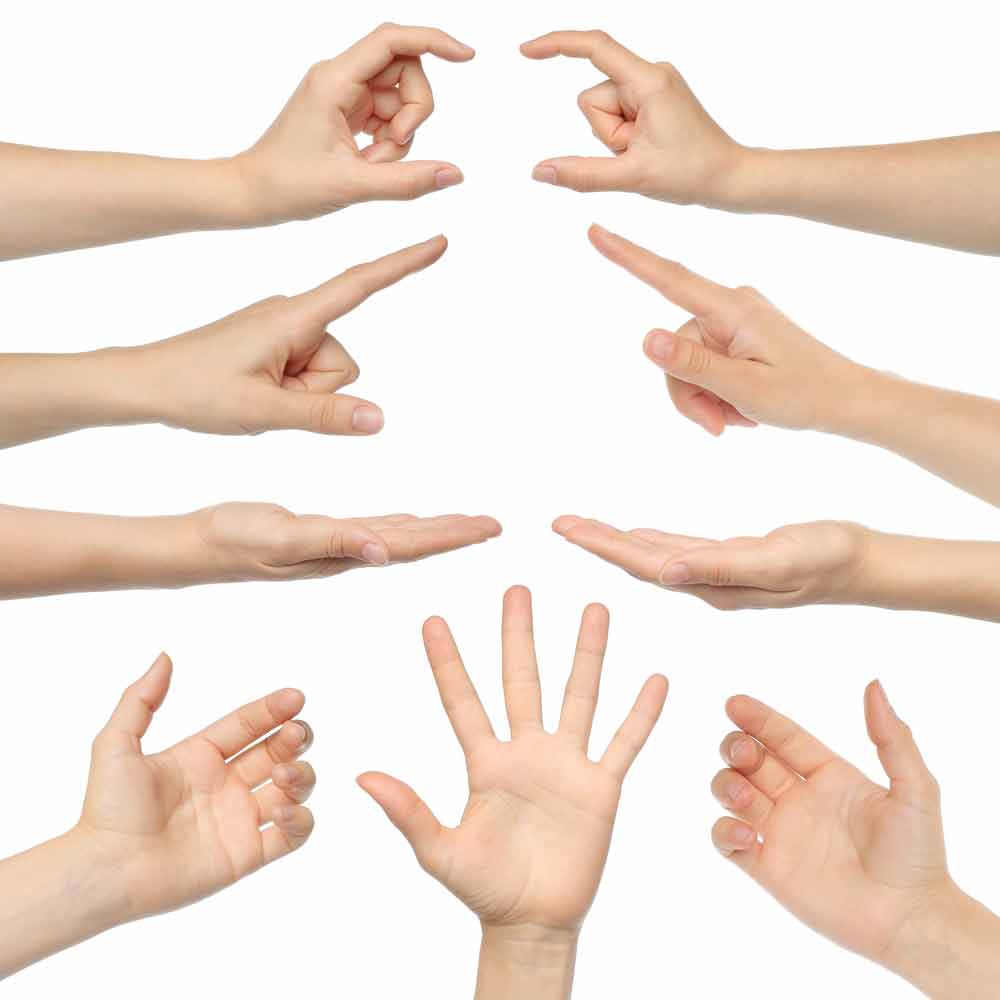
A lot of factors shape and influence athletic performance – muscular strength, the composition of the muscle fibers you have (fast-twitch vs. slow-twitch), body composition, and aerobic capacity. Some of these factors are influenced by genetics – but, it’s more than just genetics.
You might assume that certain body types, muscular and strong, have an athletic advantage. Think of the long, lithe limbs of a runner and how those legs spur a runner to victory. Yet how dedicated and motivated you are, how hard you train, and nutrition are factors too. Scientists have also found another interesting correlation – a link between the way an individual’s hands and fingers are constructed and their athletic ability.
What Your Hands Say about Athletic Ability
Could your hands hold a clue as to your athletic potential? Look at your hands and compare the length of your second finger, the finger you point with, and your fourth finger, or ring finger. Which is longer? Scientists have discovered that having a ring finger that’s longer than the finger you point with is correlated with greater athletic ability.
You can easily calculate your own ratio. Simply divide the length of your second finger by the length of your fourth finger. Lower ratios are associated with better athletic performance. So, a long ring finger would suggest that you may have untapped athletic talent or tapped athletic talent if you’re already an athlete. Of note, men typically have longer ring fingers than women and correlations between digit length and athletic prowess are stronger in men than in women. However, this correlation was also seen among women rowers. The better-performing ones had a lower ratio of the second finger to fourth finger length.
How is this possible? Scientists believe that this digit ratio is a marker for how much testosterone an individual was exposed to in utero. Greater exposure to testosterone during development helps shape a strong cardiovascular system and the ability to more efficiently deliver oxygen to muscles during exercise. During the second trimester of fetal development, there’s a surge of testosterone release that helps mold the cardiovascular and vascular system in the unborn infant. Greater exposure to testosterone during this critical time helps shape athletic ability later in life.
Interestingly, a low finger length ratio is also associated with other traits associated with high testosterone exposure in both men and women. Although we think of testosterone as being a male hormone, women are exposed to lower quantities of it from their adrenal glands and are also exposed to it during development. A lower ratio is linked with a higher degree of risk tolerance and risk taking, more verbal aggression, physical aggression, and a better sense of direction and ability to think three dimensionally.
As you might expect, exposure to testosterone during development also impacts brain development. Lower exposure to testosterone is linked with better verbal memory and the ability to remember a list of words while higher testosterone, as represented by a low finger length ratio, is associated with greater ability to mentally rotate three-dimensional objects in your head.
In addition, exposure to testosterone during development, based on preliminary research, may impact the risk of developing certain diseases and health problems. For example, autism is more common in people exposed to high levels of testosterone whereas anxiety is more prevalent in those with lower testosterone exposure.
As mentioned, women tend to have a ring and index finger roughly equal in length, making their ratio about 1.0. Having a higher ratio, a longer index finger has been linked with a greater risk of breast cancer and may signify greater exposure to another sex hormone during development, the sex hormone estrogen.
Is Finger Length Linked with Heart Health?
Scientists are even looking at this finger length ratio as a marker of disease risk. They’ve already found some interesting associations. For example, guys who have ring fingers that are equal or shorter in length relative to their index finger (a higher finger length ratio) were more likely to develop heart disease early in life. The same would not apply to females as females tend to have a ring and pointer finger that are roughly equal in length.
In addition, a study of heart attack survivors found those with who had a lower finger length ratio were more likely to have experienced their heart attack earlier in life as opposed to those with a higher finger length ratio. So, a longer ring finger relative to the pointer finger may offer some protection against cardiovascular disease. Again, this relates to increased exposure to testosterone during development. Keep in mind, this association is only a marker for higher risk. It doesn’t indicate that a person will develop heart disease early in life or any other disease but this information might be useful in identifying people at higher risk so they can make appropriate lifestyle modifications.
Another observed association between disease risk and finger length is the risk of prostate cancer in men. A longer ring finger, and therefore a lower ratio, is correlated with a reduced risk of prostate cancer.
Hands and Athletic Prowess
It’s interesting to find associations like this and there does seem to be some credibility to these findings, although more research is needed. However, there are almost surely many exceptions to the rule. How athletic you are and how successful you are in sports, weight training, aerobic exercise, or any other facet of life is strongly influenced by dedication, motivation, and training. So, look at your index and ring finger and determine your ratio but don’t place too much emphasis on it. A lot of what you achieve athletically and in any other area in life has to do with other factors, like your desire to excel and to be your best.
References:
Curr Opin Pediatr. 2013 Dec; 25(6): 653–658. doi: 10.1097/MOP.0b013e3283659087.
Discover Magazine. “Finger Length Predicts Health and Behavior”
International Business Times. “The length of your fingers can predict whether you are athletic or anxious”

